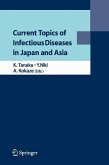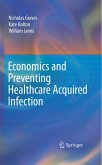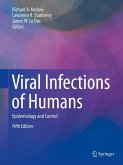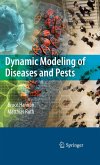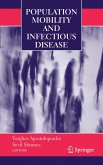Edited by Yichen Lu, Harvard School of Public Health, Boston
M. Essex, Harvard School of Public Health, Boston
Bryan Roberts, Apex Consulting Group, Cambridge, Massachusetts
Ongoing population shifts, widening health disparities, and rapid genetic mutations are major factors in viral and bacterial dissemination worldwide. At the same time, the role of Asia in the recent SARS and bird flu outbreaks have made that continent a key area of interest. Emerging Infections in Asia offers a comprehensive overview of well studied and lesser-known infectious syndromes affecting local, regional, and international health, concentrating on their greatest areas of transmission. For each disease, contributors provide its historical record, biological structures, methods of transmission, clinical presentation, infection rates, methods of control and prevention, and potential threat to health on a global scale, in clear, accessible fashion.
A sampling of the topics covered:
- Avian flu in Thailand.
- SARS outbreaks in China, Taiwan, and Singapore.
- HIV/AIDS in China.
- Human hemorrhagic fever in Saudi Arabia.
- Drug-resistant TB throughout Asia.
- E. coli in the developing world.
By summarizing the knowledge base at this critical stage, Emerging Infections in Asia aids both epidemiologists and students of epidemiology in their efforts toward preparedness for and prevention of future pandemics. It is a bedrock volume in understanding this most pressing public health issue.
Dieser Download kann aus rechtlichen Gründen nur mit Rechnungsadresse in A, B, BG, CY, CZ, D, DK, EW, E, FIN, F, GR, HR, H, IRL, I, LT, L, LR, M, NL, PL, P, R, S, SLO, SK ausgeliefert werden.
"Emerging infections in Asia provides an informative overview of several key public health challenges facing the world's most densely populated areas. A thoughtful approach to infection control and prevention is the foundation of this well written and instructive volume. [It] not only details specific infections but improves the reader's understanding of the unique interplay among individuals, animals, and travelers in settings with limited environmental and monetary resources.... The level of detail is sophisticated but still accessible, even to the nonmedical reader. If nothing else, the 2 chapters on avian influenza offer one of the most thoughtful yet succinct commentaries written about this potential pandemic. By recording the past and looking to the future, the contributors of Emerging Infections in Asia remind readers that when it comes to infectious diseases, the world will continue to get smaller." (Preeti N. Malani, MD, MSJ, JAMA 301:4, Janurary 2009)



